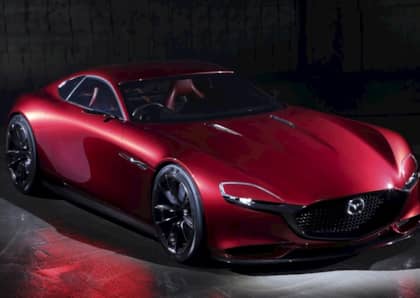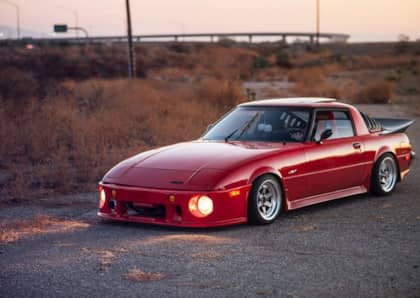Looking Back: Driving A Bone-Stock 1993 Mazda RX-7 R1
In the pantheon of modern classics, the FD-generation Mazda RX-7 is perhaps the most misunderstood. Enshrined for the beauty of its flowing lines, yet to be equaled by a successor, and celebrated for its lightweight, well-balanced chassis, the third and final aspect of its greatness, its twin-turbo rotary engine, has also proven to be its Achilles heel. With a reputation for smooth power delivery and high rpm shenanigans balanced out by fears regarding reliability and finicky maintenance, the FD's unusual motor has kept it on the sidelines for all but the bravest enthusiasts willing to take a chance on the arcane coming together with apex seals and oil injectors.
What is it like to drive the final edition of Mazda's rotary sports car in a modern context? How well does it compare to not just the memories of its contemporaries, but the evolution of the performance market in the nearly quarter-century since it was last offered for sale in the United States? I spent several days with an example borrowed from Mazda's classic collection to find out.
Time Capsule
Specifically, I had the opportunity to live with a 1993 Mazda RX-7 R1, decked out in bright Competition Yellow and with a mere 19,000 miles registered on the odometer. The R1 cars had a limited production run, with only 350 painted like this one sold during their single model year. The sportiest "out of the box" RX-7 that money could buy, the R1 featured Bilstein shock absorbers, additional chassis stiffening, a unique set of spoilers front and rear and stiffer springs.

Power remained the same as the rest of the third-gen RX-7 fleet: 255hp from a 1.3L rotary engine, fed by a pair of turbochargers that aided and abetted the production of 217 lb-ft of torque. The 13B-REW Wankel motor is as unique on the current landscape as it was back then, what with its 8,000 rpm redline and the now-unusual feel of sequential turbos playing off each other nearly midway through the powerband. A five-speed manual gearbox that shifts remarkably well (another Mazda trademark) rounds out the package.
Rotary Woes
Why exactly have JDM fans been so reluctant to engage with the final version of the RX-7? The answer lies in the complex web of maintenance and care required to keep the 13B-REW running smoothly, something not all previous owners were willing to respect, with their negligence and the subsequent issues creating its reputation for being expensive to own.
In a nutshell, the car wasn't given adequate cooling from the factory, which means you've got to let it idle after longer periods of driving to give the motor time to cool down (and add a fan switch from a previous-generation RX-7 that comes on at a lower temperature). This heat also dries out the rat's nest of vacuum hoses (67 in total) that are responsible for timing the twin turbos, and replacing these hoses with strong synthetic rubber (and installing a larger radiator) is a definite requirement for long-term peace of mind.

The engine also consumes oil as part of its design, but using synthetic is a no-no, as it leaves behind damaging deposits, requiring either a dedication to dino lubricants or the installation of a secondary tank used exclusively for injecting two-stroke oil.
Finally, rotary engines tend to flood if they're started, driven a very short distance and then immediately shut down before reaching operating temperature, meaning you've got to keep an eye on the temp gauge after a cold start or risk getting stranded in your own driveway.
Maintenance-Free for Me
The beautiful thing about this particular FD R1, however, is that I'm not on the hook for its long-term well-being. I only need to respect its quirks and treat it with the care a living museum piece deserves. As a result, I'm far less bothered by the need to idle at my destination rather than simply shutting down and leaving the car, and I'll never have to worry about oils, apex seals or vacuum hoses.

This allows me to concentrate fully on the pleasure of running the rotary all the way to redline through the first few gears, ears attuned to the high-pitched whistle of its turbos as it surges forward with the authority imbued by its sub-3,000 lbs of curb weight. I had been advised that the car loves to live above 6,000 rpm, and I found myself keeping the transmission in second gear in most around-town driving, enjoying the near-instant throttle response and the harmonious burble of the surprisingly boisterous factory exhaust.
If you can avoid the habit of shifting at 3,000 rpm as one would in a piston-driven vehicle, the RX-7's drivetrain quickly becomes addictive. Slightly less invigorating is its stiff suspension tuning. Montreal's rough roads translate into a chorus of creaks and groans from the car's plastic interior panels (and, I suspect, the hatch). It's better suited for mountain passes than daily commuting, and although steering is slower than what I might prefer during a track session, the RX-7 feels more lithe than any current GT car. The cabin is comfortable, roomy enough for two and, aside from the stiff center console, not nearly as dated in terms of materials as one would expect.

Get Invested
There's really no equivalent to the Mazda RX-7 experience. Not quite a pure sports car, and significantly lighter than what one would normally consider a grand-tourer, it’s a platform whose turbo rotary engine has pushed it to both the pinnacle of its era in terms of performance and the margins of modern day collectibility. If you're willing to invest the time, effort and patience that the 13B-REW requires, then you'll benefit not just from an unparalleled drive, but also ownership of the most beautiful Japanese car ever built.











